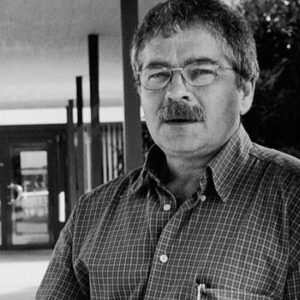J. Georg Bednorz is a German physicist who shared a Nobel Prize for Physics in 1987. He did major work on high-temperature superconductivity in ceramic materials in collaboration with Swiss physicist K. Alex Müller. He developed an early interest in fiddling with motorcycles and autos as the son of instructors. He began playing the violin and subsequently the trumpet in the school symphony as a teenager, honing his artistic side. He was also interested in science, and as a practical person, he found chemistry experiments more engaging than studying theoretical physics. He began his studies in chemistry at the University of Münster, but quickly switched to the less well-known area of crystallography, a subset of mineralogy. His teachers arranged for him to spend three months as a summer student at the IBM Zürich Research Laboratory in 1972. During this time, he met K. Alex Müller, his future collaborator. Following his graduation and subsequent degree, Bednorz joined Müller’s ongoing superconducting research at IBM. Their collaboration resulted in important discoveries in the discipline, including the discovery of superconductivity in ceramic materials at temperatures greater than previously thought possible, which earned them the Nobel Prize in Physics in 1987.
Childhood and Adolescence
On May 16, 1950, Johannes Georg Bednorz, the fourth child of Anton and Elisabeth Bednorz, was born in Neuenkirchen, North Rhine-Westphalia, Federal Republic of Germany. His mother taught piano and his father was a primary school teacher.
His parents attempted to pique his interest in music when he was a small lad. But he preferred fiddling with his older brothers’ motorcycles and automobiles. During his adolescence, though, he grew interested in music.
From a young age, he was fascinated with science, particularly chemistry. He enrolled at the University of Münster to study chemistry in 1968, but he did not enjoy his time there. As a result, he changed his major to crystallography, which is a branch of mineralogy.
He was an excellent student. Wolfgang Hoffmann and Horst Böhm, his teachers, arranged for him to spend the summer of 1972 as a visiting student at the IBM Zurich Research Laboratory. There he met K. Alex Müller, the physics department’s chief, who would later become a collaborator.
He returned to Zurich in 1973 and 1974 for six months each time, having been deeply motivated by his intellectually stimulating stay and work there. During this time, he grew crystals of SrTiO3, a ceramic material from the perovskite family, and Müller was very supportive of his efforts.
In 1977, he received his master’s degree from Münster and began his doctoral studies at the ETH Zurich (Swiss Federal Institute of Technology), where he was supervised by Heini Gränicher and Alex Müller. In 1982, he obtained his doctorate.
Career of J. Georg Bednorz
Following his degree, he joined the IBM Zürich Research Laboratory to collaborate with Müller on superconducting research. The two men began their systematic study of metallic oxides in 1983 with the goal of developing superconductors with high transition temperatures.
They explored with the electrical characteristics of ceramics made from transition metal oxides throughout their research. The experimenter in charge of the actual fabrication and testing of the oxides was Bednorz.
They were able to induce superconductivity in a lanthanum barium copper oxide by 1986. (LaBaCuO, also known as LBCO). The critical temperature of the oxide was 35 K, which was a full 12 K higher than the previous greatest temperature at which superconductivity has been attained in any substance.
Their discovery sparked a surge of interest in high-temperature superconductivity, prompting a slew of further studies on cuprate materials with structures similar to LBCO, eventually leading to the discovery of compounds like BSCCO and YBCO.
In 1987, the Nobel Prize in Physics was awarded to the two scientists for their revolutionary discovery. Bednorz was named an IBM Fellow the same year.
Since then, he’s been concentrating on the synthesis of novel complex oxide compounds as well as their specialized modification for use in microelectronics. He is particularly interested in the behavior of thin epitaxial layers in intense electric fields, particularly metal-insulator-metal heterostructures.
Major Projects of J. Georg Bednorz
High-temperature superconductors, or materials that behave like superconductors at extraordinarily high temperatures, were discovered by Georg Bednorz and Alex Müller in partnership. Bednorz was the principal experimenter in charge of creating and evaluating the oxides utilized in the tests that led to this finding.
Achievements & Awards
Georg Bednorz and K. Alex Müller were awarded the Marcel Benoist Prize by the Marcel Benoist Foundation in 1986.
“For their important break-through in the discovery of superconductivity in ceramic materials,” Georg Bednorz and K. Alex Müller received the Nobel Prize in Physics in 1987.
Bednorz is the recipient of the Minnie Rosen Award and the James C. McGroddy Prize for New Materials (1988). (1988).
Personal History and Legacy
He is married to Mechthild Wennemer, a fellow scientist whom he met in 1974 while studying at the University of Münster.
Estimated Net Worth
The estimated net worth of J. Georg Bednorz is unknown.


